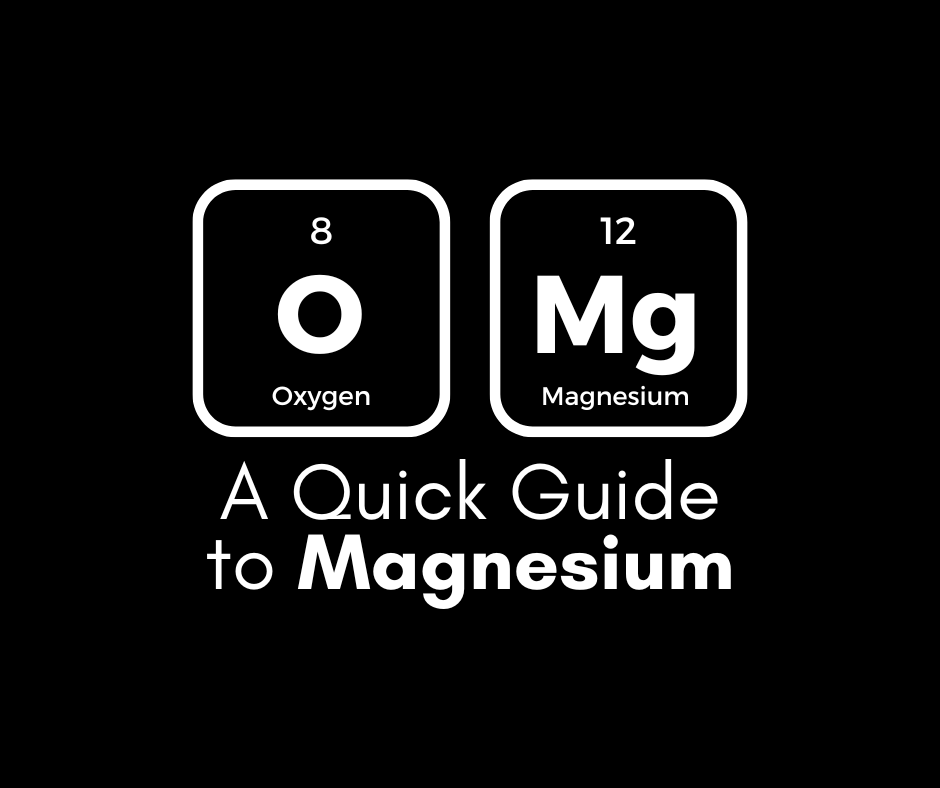
Magnesium is a natural element that is the eleventh most abundant element in the human body. It is essential for over 300 biochemical processes in the body that include muscle function, normal heartbeat, blood sugar control, nerve function, nutrient transportation, and much more. Basically, your body needs magnesium to guide it to be as healthy as it can be! Without enough magnesium a day, your body can quickly develop harmful and possibly life-threatening diseases.
Thankfully, magnesium can be found in plenty of plant and animal foods. Eating them ensures you’ve got a plentiful supply that your various organ systems can use.
Magnesium is a very powerful mineral that many people overlook, so make sure you’re getting plenty of it by eating the right foods and recognizing when your body needs more magnesium. We’ll be discussing both topics in our guide to magnesium below.
How Much Magnesium Do I Need a Day?
The amount of magnesium you need a day depends on your age and gender.
Recommended Amount for Men
14 to 18: 410 mg/day
19 to 30: 400 mg/day
31 and above: 420 mg/day
Recommended Amount for Women
14 to 18: 360 mg/day
19 to 30: 310 mg/day
31 and above: 320 mg/day
Recommended Amount for Children
1 to 2: 80 mg/day
4 to 8: 130 mg/day
9 to 13: 240 mg/day
Recommended Amount for Infants
< 6 months: 30 mg/day
6 to 12 months: 75 mg/day
What are the Symptoms of Magnesium Deficiency?
The tough thing about measuring magnesium levels in the body is that much of the mineral isn’t stored in the blood. That means a routine blood test isn’t enough to assess your magnesium levels. Instead, magnesium is stored in the bones, which makes it exponentially more difficult to know if you lack magnesium. With that said, magnesium deficiency often goes undiagnosed. This is dangerous because magnesium deficiency causes things like heart disease, diabetes, osteoporosis, and many more!
You can recognize some of the warning signs though. Magnesium deficiency can cause muscle weakness, fatigue, lack of appetite, nausea, and vomiting. But keep in mind that all these symptoms also point to a wealth of other conditions. So, if you’re not sure if what you’re experiencing is magnesium deficiency or not, consult with your doctor.
Groups of people are more prone to magnesium deficiency than others. These include people with alcohol problems, Crohn’s or celiac disease, diabetes, and older people. Some medications also deplete magnesium stores in the body like proton pump inhibitors and diuretics.
What Foods are Rich in Magnesium?
Foods high in magnesium are typically high in fiber as well. So, if you’re at the grocery store and not sure what to get, getting foods that are high in fiber is usually your best bet.
Some magnesium-rich foods include spinach (78 mg per half cup), cashews (74 mg per ounce), black beans (60 mg per half cup), edamame (50 mg per half cup), peanut butter (49 mg per two tablespoons), and salmon (24 mg per 3 ounces). Some bottled water brands also have magnesium in their products if you want to drink rather than eat magnesium.
Other foods that have relatively high levels of magnesium include bananas, yogurt, avocados, potatoes, and milk.



